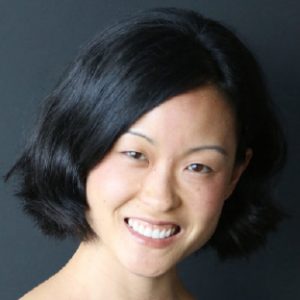With Hawaii public schools nearing the halfway point of a highly irregular school year, state Department of Education officials are hopeful many campuses can return in January to the blended learning models they鈥檇 initially planned for last summer.
to a list of questions from House lawmakers, DOE officials said schools are still developing for the second semester, which begins Jan. 5.
Leaders anticipate a phased-in approach in which some students would return to class while others would continue to learn online as officials monitor COVID-19 case counts and positivity rates.

During an before the House Lower and Higher Education Committee chaired by Rep. Justin Woodson, DOE Superintendent Christina Kishimoto assured lawmakers that the infrastructure to support teachers, students and staff as schools juggle in-person instruction with remote learning is sound and not at risk of cratering.
She said the school year so far has seen a low percent of teacher vacancies, a low rate of special education teacher vacancies and a low number of requests for substitutes.
鈥淭his is a huge credit to our teaching workforce,鈥� Kishimoto said.
, assistant superintendent in the DOE Office of Talent Management, said while in a typical year there are 200 special ed teacher vacancies, this year has just 69 out of 2,180 total positions in that area.
鈥淭hat is one of the lowest rates we鈥檝e seen in quite a while,鈥� she said, attributing the numbers to the $10,000 special education salary differential the DOE began offering in January.
Corey Rosenlee, head of the Hawaii State Teachers Association, was optimistic about the numbers and called the differential the right approach, despite its cost.
“I do worry it’s in jeopardy,” he said. “But this is the hope … that we can make sure that special education students are actually getting services required by law.”
Currently, just under 10% of K-12 students among a total 171,000 public school students are back to in-person learning. That leaves the vast majority of students in either blended learning (roughly 112,600 students) or full-remote instruction (42,750 kids).
With just a month left until winter break, some DOE schools are gradually bringing kids back to campus, though many schools have already brought back vulnerable students, like special education, English learners or those without internet connectivity.
Still, many schools are preferring to wait until January to start bringing students back or commit to the blended learning models they鈥檇 outlined before the school year officially began Aug. 17.

The uncertainty with the trend in coronavirus cases around the state and fluctuation in community transmission has made planning for the school year a challenging task.
For blended learning, the DOE and state Department of Health are urging school and complex area leaders to adhere to strict safety and sanitizing protocols; encourage at least 6 feet of distancing; separate kids into cohorts; curtail large group activities; and remind families and staff to stay home if they feel sick, among other things.
says schools should operate facilities and transportation services at 50% capacity.
Still, even the DOE acknowledges that separating students into smaller groups during the day is not as conceivable for higher grades.
鈥淎s students progress through a higher level of specialization in student coursework … student pods become increasingly difficult to implement,鈥� the .
DOE officials further elaborated Tuesday that there is no 鈥渢rigger鈥� for a school to revert back to online learning 鈥� something many mainland schools have been forced to do as COVID-19 cases have in most parts of the country.
The DOE, which operates as a single statewide school district, said this need will be determined 鈥渃ase by case based on the unique needs of each school within a complex鈥� since cases can 鈥渧ary widely within communities throughout the state.鈥�

Following the briefing, Woodson acknowledged there is not one 鈥渕onolithic response鈥� to the issue of reopening schools.
鈥淚 really think it depends on what the community is desiring,鈥� he said. 鈥淲e just have to move forward and work collectively and make sure everyone鈥檚 concerns are addressed.鈥�
The briefing follows last week鈥檚 DOH COVID-19 cluster report revealing that an unnamed Oahu intermediate school mandated a two-week quarantine for students and staff who had come into close contact with an infected student.
The short narrative reveals the extent to which schools have had to grapple with spacing issues but also deal swiftly with contacting potentially impacted people.
The report said the middle-schooler had moved to different classrooms throughout the day and that some classrooms lacked the space to enforce 6-foot distancing between desks.
Although contacts extended to more than 100 people, just one additional COVID-19 case was traced back to the student, according to the DOH report.
The DOH did not specify from which school or town on Oahu the case arose, stymying efforts to provide more transparency around community transmission.
“We will continue to push to get more information on what’s happening with individual campuses,” House Majority Leader Della Au Belatti said.
The Oahu school was not a DOE school, according to spokeswoman Nanea Kalani. Yvonne Lau, interim executive director of the Hawaii State Public Charter School Commission, said she was not aware of any positive COVID-19 case stemming from a charter middle school.
Phil Bossert, executive director of Hawaii Association of Independent Schools, said none of his K-12 school leaders answered affirmatively when asked if the case involved their own school.
鈥淪o, I cannot say one way or another 鈥� I really don鈥檛 know,鈥� Bossert said.
 Sign up for our FREE morning newsletter and face each day more informed.
Sign up for our FREE morning newsletter and face each day more informed.
We need your help.
Unfortunately, being named a聽finalist for a聽Pulitzer prize聽doesn’t make us immune to financial pressures. The fact is,聽our revenue hasn鈥檛 kept pace with our need to grow,听.
Civil Beat is a nonprofit, reader-supported newsroom based in 贬补飞补颈驶颈. We鈥檙e looking to build a more resilient, diverse and deeply impactful media landscape, and聽we hope you鈥檒l help by .

